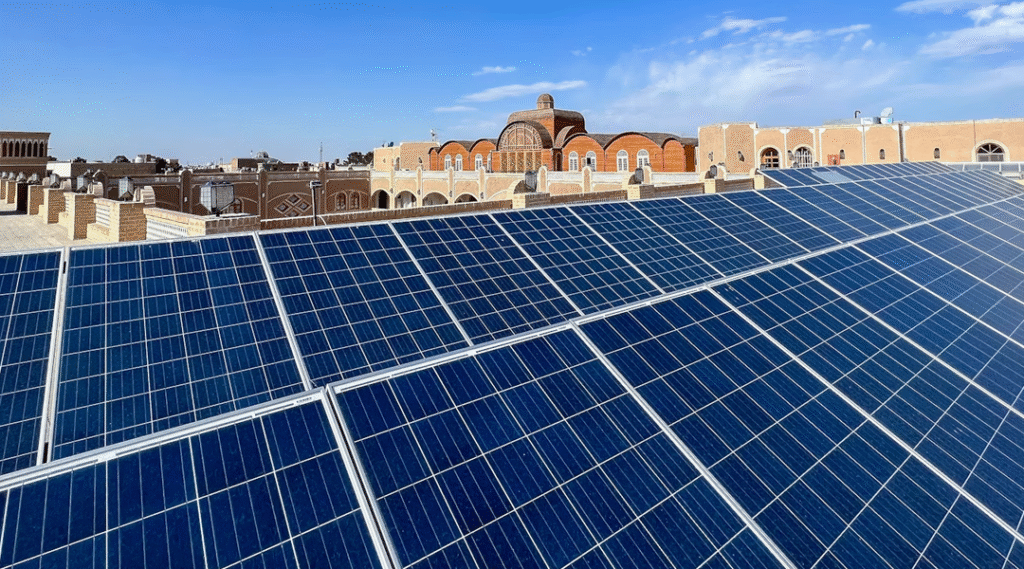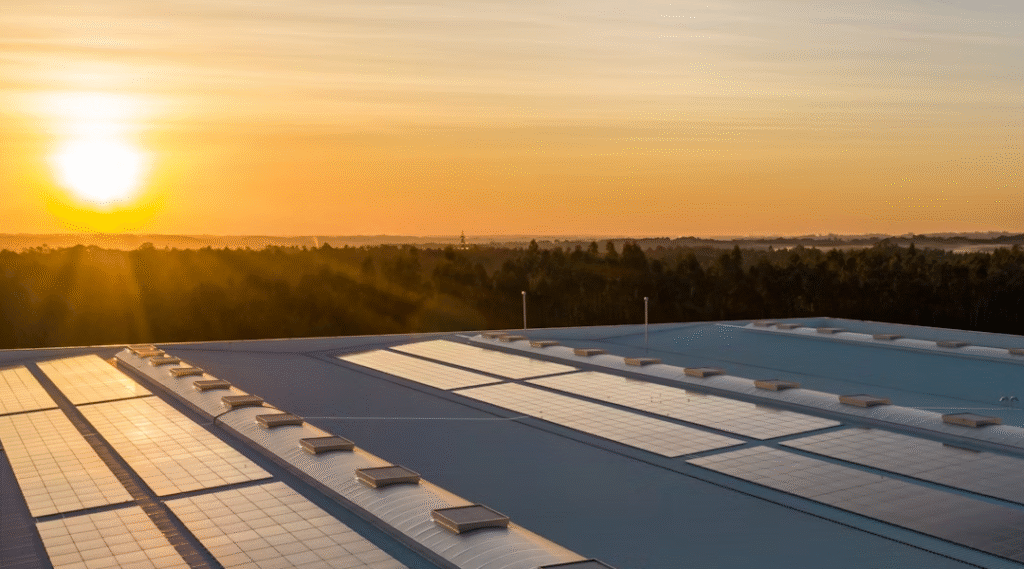As the world accelerates its pivot away from fossil fuels, solar energy has emerged as a linchpin of the clean-energy transition. From the crystalline panels gracing suburban rooftops to massive desert-spanning solar farms, photovoltaic (PV) technology has evolved at breakneck speed. This article explores the spectrum of solar deployment—examining the core PV technologies, the economics of Balance-of-System (BOS) components, real-world capacity factors, and cutting-edge innovations poised to reshape the landscape.
1. Photovoltaic Technologies: Crystalline, Thin-Film, and Beyond
PV cells convert photons into electrons, but not all cells are created equal.
- Monocrystalline Silicon (Mono-Si): Widely regarded for its high efficiency (20–24 %), mono-Si panels dominate both residential and commercial rooftops. The uniform crystal structure yields superior performance per square meter, though at a higher cost.
- Polycrystalline Silicon (Poly-Si): Comprising multiple silicon crystals, poly-Si offers slightly lower efficiency (15–18 %) but at reduced manufacturing expense. It retains a strong foothold in utility and commercial arrays where space constraints are less pressing.
- Thin-Film PV: Materials such as cadmium telluride (CdTe), amorphous silicon (a-Si), and copper indium gallium selenide (CIGS) allow panels to be deposited directly onto glass or metal substrates. While efficiency lags (10–14 %), thin-film excels in low-light conditions, weight-sensitive applications, and building-integrated PV (BIPV).
Emerging third-generation cells—perovskites, organic PV, and multi-junction architectures—promise efficiency beyond 30 % in the lab, potentially slashing levelized costs if durability challenges can be overcome.
2. Balance-of-System (BOS) Costs and Installation Trends
Beyond the panels themselves, BOS elements—mounting hardware, inverters, wiring, labor, and permitting—typically account for 40–60 % of total system costs.
- Mounting Structures: Fixed-tilt racks remain the simplest and cheapest. Two-axis trackers can boost yield by 25–35 % annually, justifying their higher upfront cost on large ground-mounted sites.
- Inverters and Power Electronics: Central inverters suit utility arrays, while string and micro-inverters offer modularity and panel-level optimization in residential systems. Rapid price declines in power electronics have unlocked greater system flexibility and diagnostic capabilities.
- Soft Costs: Permitting, interconnection fees, and financing overhead vary widely by region, sometimes representing up to 30 % of installed cost. Policy reforms and streamlined “one-stop” processes are crucial to driving further cost reductions.
According to recent industry reports, global solar module prices fell by 15 % in the past year alone, while BOS costs decreased by 8 %, pushing average project breakevens below $40 /MWh in sun-rich regions.
3. Capacity Factors and Performance Metrics
A system’s capacity factor—the ratio of actual energy output to its theoretical maximum—depends on location, technology, and system design.
- Residential Rooftops: Typically 10–18 % capacity factors due to suboptimal tilt angles, shading, and maintenance constraints.
- Commercial Installations: Closer to 18–22 % with better siting and professional upkeep.
- Utility-Scale Farms: Trackers and large arrays in high-insolation zones routinely achieve 25–30 % capacity factors, with some desert projects exceeding 35 %.
Performance ratios (actual vs. modeled output) and degradation rates (0.3–0.8 % annual drop in panel efficiency) are also critical when modeling long-term returns.
4. Emerging Innovations: Perovskites, Bifacial, and BIPV
Solar R&D remains vibrant:
- Perovskite Tandems: Stacking a perovskite cell atop silicon can capture a broader solar spectrum, pushing record efficiencies past 30 %. Commercialization hinges on improving moisture resistance and manufacturing scale.
- Bifacial Modules: By collecting reflected albedo from the ground, bifacial panels can boost annual yields by 5–20 %, especially over white or reflective surfaces.
- Building-Integrated PV (BIPV): Solar shingles, curtain-wall glass, and roof tiles enable architects to embed power generation directly into structures, reducing BOS and aesthetic compromises.
Ongoing breakthroughs in printable PV inks, recyclable panel materials, and AI-driven performance monitoring promise to further democratize solar adoption.
5. Outlook and Recommendations
Solar power’s trajectory is unmistakable: global installed capacity crossed 1 TW in 2024 and is projected to double by 2030. For investors and policymakers, the focus should be on:
- Reducing Soft Costs: Simplified regulations and standardized financing platforms can eliminate key bottlenecks.
- Grid Integration: Enhanced forecasting, storage pairing, and transmission upgrades will mitigate variability and support higher penetration.
- Local Manufacturing: Diversifying supply chains and incentivizing domestic module assembly can bolster resilience and regional job creation.
- R&D Continuity: Sustained funding for next-gen materials and recycling technologies will ensure that solar remains the cheapest source of new electricity for decades.
In sum, solar power has moved from niche to mainstream and now stands on the cusp of ubiquity. By optimizing across technologies, systems, and policies, we can ensure that every ray of sunshine advances our journey toward a carbon-neutral future.
All articles for this special edition-Clean Energy:
(#1) The State of the Global Clean Energy Transition
(#2) Solar Power: Illuminating the Path from Rooftops to Utility-Scale Farms
(#3) Wind Energy: Onshore, Offshore & Beyond
(#4) Harnessing the Depths and Tides: A Deep Dive into Hydro, Marine & Geothermal Energy
(#5) Bioenergy & Waste‑to‑Energy: Turning Organic Residues into Renewable Power
(#6) Energy Storage & Grid Integration: Powering the Future of Clean Energy
(#7) Economics, Financing & Business Models in the Clean‑Energy Transition
(#8) Designing the Rules: Policy, Regulation, and Market Design in the Clean‑Energy Era
(#9) Environmental & Social Impacts of the Clean‑Energy Transition
(#10) Next‑Generation Clean‑Energy Innovations & the Road Ahead
As for in-depth insight articles about AI tech, please visit our AI Tech Category here.
As for in-depth insight articles about Auto Tech, please visit our Auto Tech Category here.
As for in-depth insight articles about Smart IoT, please visit our Smart IoT Category here.
As for in-depth insight articles about Energy, please visit our Energy Category here.
If you want to save time for high-quality reading, please visit our Editors’ Pick here.



